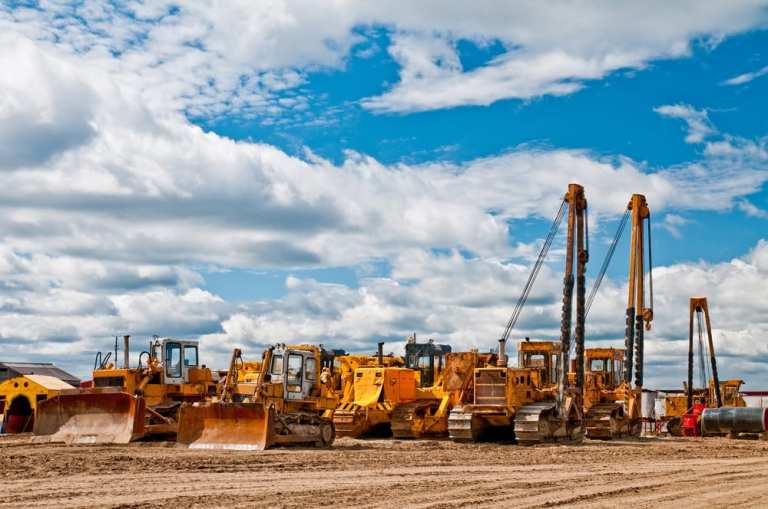Construction Ponders The Equipment Rent-Versus-Buy Dilemma

Confidence in the equipment finance industry has dropped in recent weeks, new data from the Equipment Leasing and Finance Foundation revealed. While equipment finance may seem like a niche market, it can reflect an array of ongoing and upcoming trends in the current economy, from inflation and interest rates to future expectations for business growth. Stronger economies will yield more organizations accessing finance to procure high-value pieces of machinery and equipment, but when optimism is low, fewer firms will seek out that financing.
The Foundation found that fewer survey respondents expect the demand for equipment leases and loans to increase, and fewer expect business conditions to improve in the coming four months.
The survey offers a month-by-month glimpse into industry sentiment. However, according to Keith Holmes, VP of operations at equipment rental platform BigRentz, in the last several years, he has seen a significant shift from the purchasing model to the rental model among the construction companies that use the site.
Though economists and business leaders are split on when it will occur, many expect that an economic recession is on the horizon, which may fuel the drive toward equipment rentals, and push companies even further from leasing and ownership.
“We’ve seen a big shift. We’ve seen a lot more companies shift [toward] the rental model,” Holmes told PYMNTS in a recent interview, adding that companies are taking a closer look at the costs of equipment ownership: the initial asset costs, and however long it takes to pay off equipment financing, plus the cost of maintenance and, in many instances, a dedicated team to maintain and repair equipment. There are other costs linked to repairs and replacement parts, too.
Seasonal and economic fluctuations can make it quite difficult for an organization that has taken out financing to procure an expensive piece of equipment and obtain the most value out of their purchase, particularly if that equipment is collecting dust during slow months of business.
There’s also the matter of keeping up to date with the latest equipment models and technologies, Holmes noted. When an item is procured, a newer version can come out only a few years later, but a business will still be left with the bill of financing the initial piece of machinery.
All of this makes the concept of renting equipment attractive, particularly as some companies brace for a recession and the potential implications of operational slowdowns. That’s particularly true in the construction sector, which is not only prone to the impacts of a recession, but can often be one of the first industries to show signs of an economic slump, leading construction advisors at FMI to warn the sector to “recession-proof” their operations.
Rental Pains
Despite its benefits, equipment rentals come with significant pain points for both vendors and renters. Holmes explained that much of that friction stems from having to collaborate with multiple suppliers or customers, sometimes across state lines, each with different ways of doing business, different payment terms and different logistical needs.
BigRentz recently moved to tackle one of the largest challenges of equipment rental: setting up multiple rentals in multiple locations across the country. A construction company that secures a contract from a nationwide company like Walgreens or Walmart may have to rent the same type of equipment at multiple locations in the U.S.
Having to do that manually means finding multiple vendors that can offer the right type of equipment, dealing with each of their specific contract and payment requirements, and ensuring that the equipment is delivered to the correct address at the right time — a feat of significant coordination. BigRentz recently rolled out its automated bulk order solution that cuts out the potential for errors when companies need equipment at multiple locations.
“What’s really important for customers is efficiency,” said Holmes. “The biggest thing is saving time. A lot of times, it’s not thought through and it’s difficult to quantify, but time is a valuable resource.”
As the middle point between vendors and renters, BigRentz can consolidate the process on both sides of a transaction. The platform acts as both sole customer and sole provider for both supplier and customer, streamlining the invoice process, and providing predictability and reliability to the payment process.
With delayed payments a key challenge in the construction sector (separate research from the ELFA revealed that receivables more than 30 days out increased to 1.9 percent year over year last March, while credit approvals declined), payment predictability is key.
While buyers can also add flexibility to their operational capacity via renting, the business model helps vendors reach a nationwide customer base, and ensures that their assets are in rotation and generating profit as much as possible, Holmes added.
In times of market uncertainty, and even in times of market growth, organizations must be able to respond accordingly. In the construction space, that means taking jobs (and obtaining the right equipment) when they come — and being able to limit capital outflow when jobs are scarce. In essence, Holmes said that meeting vendor and renter needs, as they emerge, is essential.
“At the end of the day, if there’s no equipment available, you can’t work,” he said. “Especially if you’re talking about smaller businesses. The ability to say ‘yes’ is the key point here.”